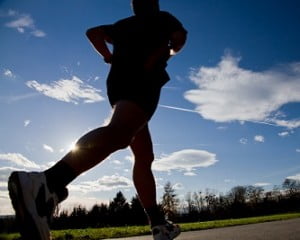Donna, a 43 year old married mother with a one year old son saw me for evaluation of severe low back and buttock pain. Her MRIs showed a disc herniation at L4-5 and moderate-to-severe spinal stenosis at the same level. She received physical therapy, 3 epidural steroids and chiropractic treatments with transient or no pain relief. Her orthopedic surgeon told her that since all conservative measures were already done the only option was spine surgery. He felt a fusion should be done.
My soft tissue examination identified 3 areas in her low back (the Quadratus Lumborum on both sides, and the right Gluteus Maximus) as possible sources of her pain. Each was treated with an injection technique that emphasizes placement of the needle into the muscle’s tendinous and bony attachments and the tissue along the course of the muscle from the origin to the insertion. A 3 day post-injection physical therapy protocol followed each injection session. Donna was taught all 21 exercises in my low back exercise program and experienced complete relief in less than a month after starting treatment. She returned to the gym, ran a half marathon and on follow up 5 years after treatment, was still pain free, hiking, biking, and running.
I believe that patients like Donna who receive spine surgery will frequently be found as Failed Back Surgery Syndrome cases.
Imaging findings often do not provide an accurate explanation for your pain. Addressing the imaging diagnosis without an examination to identify possible specific sources of muscle pain may lead to treatments that are at best inadequate and at worst damaging.
Filed under: back pain posts • Spinal stenosis
Like this post? Subscribe to my RSS feed and get loads more!



Kudos to Dr Marcus for looking at the QL. I have regularly found it to be a/the major culprit in chronic back/hip pain, yet I have rarely been able to convince either the physicians or the physical therapists to consider it. I am always mindful of the actions of that muscle in my ergonomics practice, as constant unilateral trunk flexion or rotation typically overworks this muscle. More kudos to Dr M for knowing that the QL needed to be relaxed and lengthened, and only then strengthened. Many years ago I had the good fortune to learn tonic and phasic muscle physiology from Dr Vladimir Janda, and it made a big difference in my work. Prior to that I followed my training, and sought to strengthen most muscles. This intervention is the opposite of that which needs to be done to the injured QL, or any tonic muscle. Of additional significance is the inhibiting effect of tonic muscles on related phasic muscles, and the subsequent development of active trigger points in the latter (e.g., Pec Minor’s effects on Infraspinatus and Upper Trap’s on Lower Trap). My experience has shown me that while the TrPoints in phasic muscles need to be deactivated, the muscles do not typically need to be relaxed and then stretched – or at least as much as the tonic Ms need. Instead they typically need strengthening AFTER TrP release. Breakthroughs in, say, unraveling the genetic code or advancing the treatment of cancers understandably get the headlines. But when I consider the huge cost of chronic pain that has its origin in muscle, I wish for similar headlines about the work by Dr Marcus and the other trailblazers.